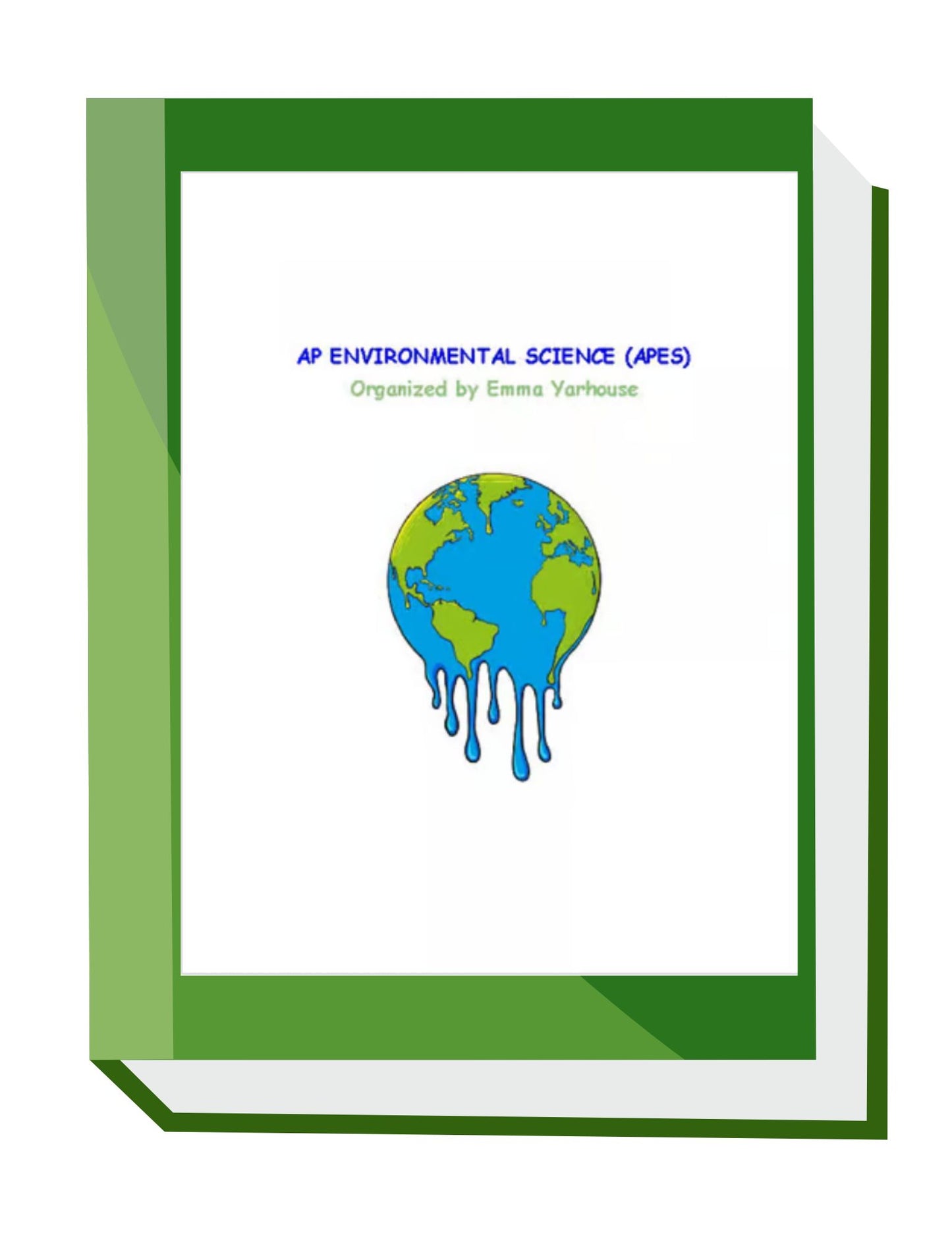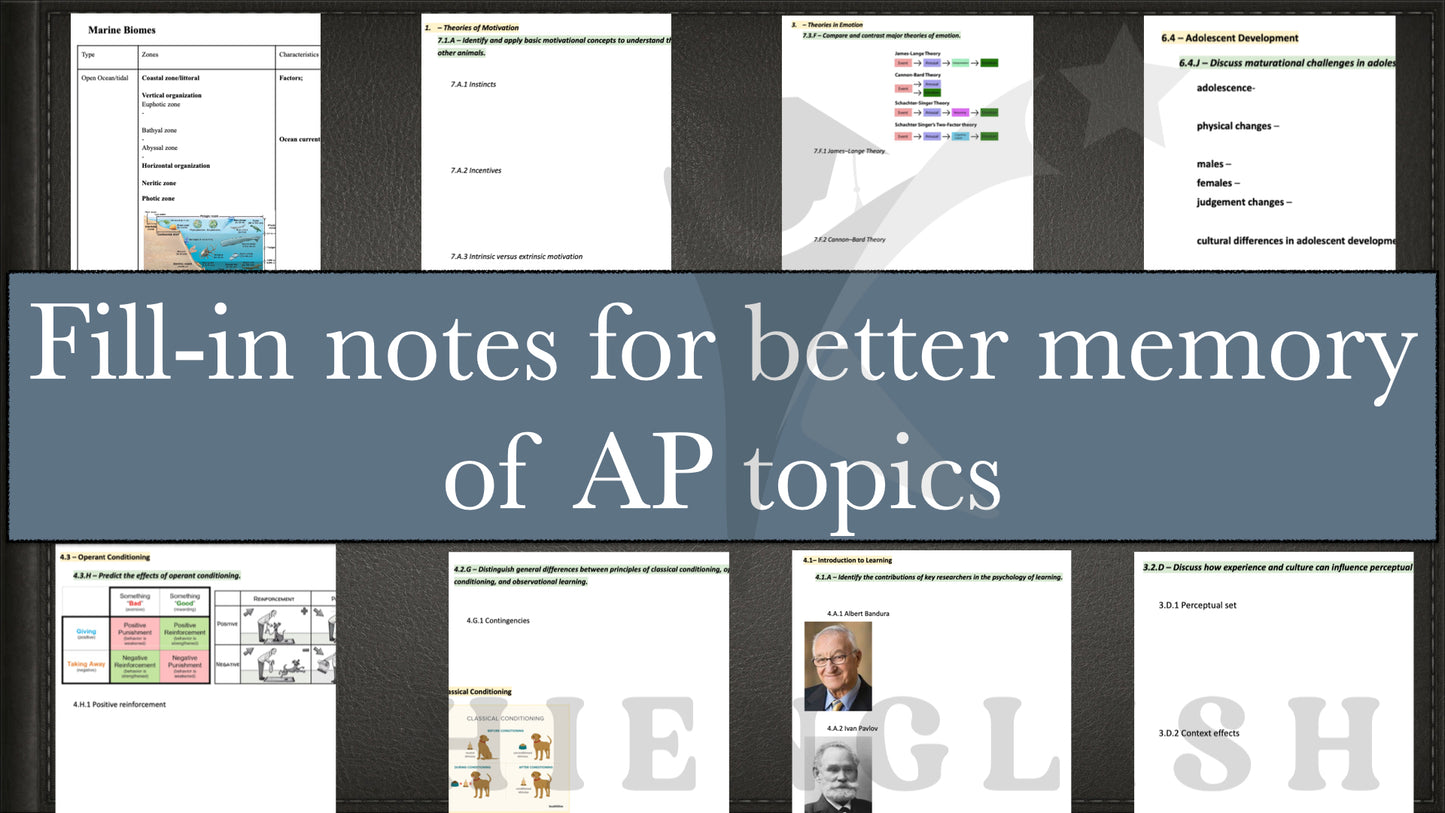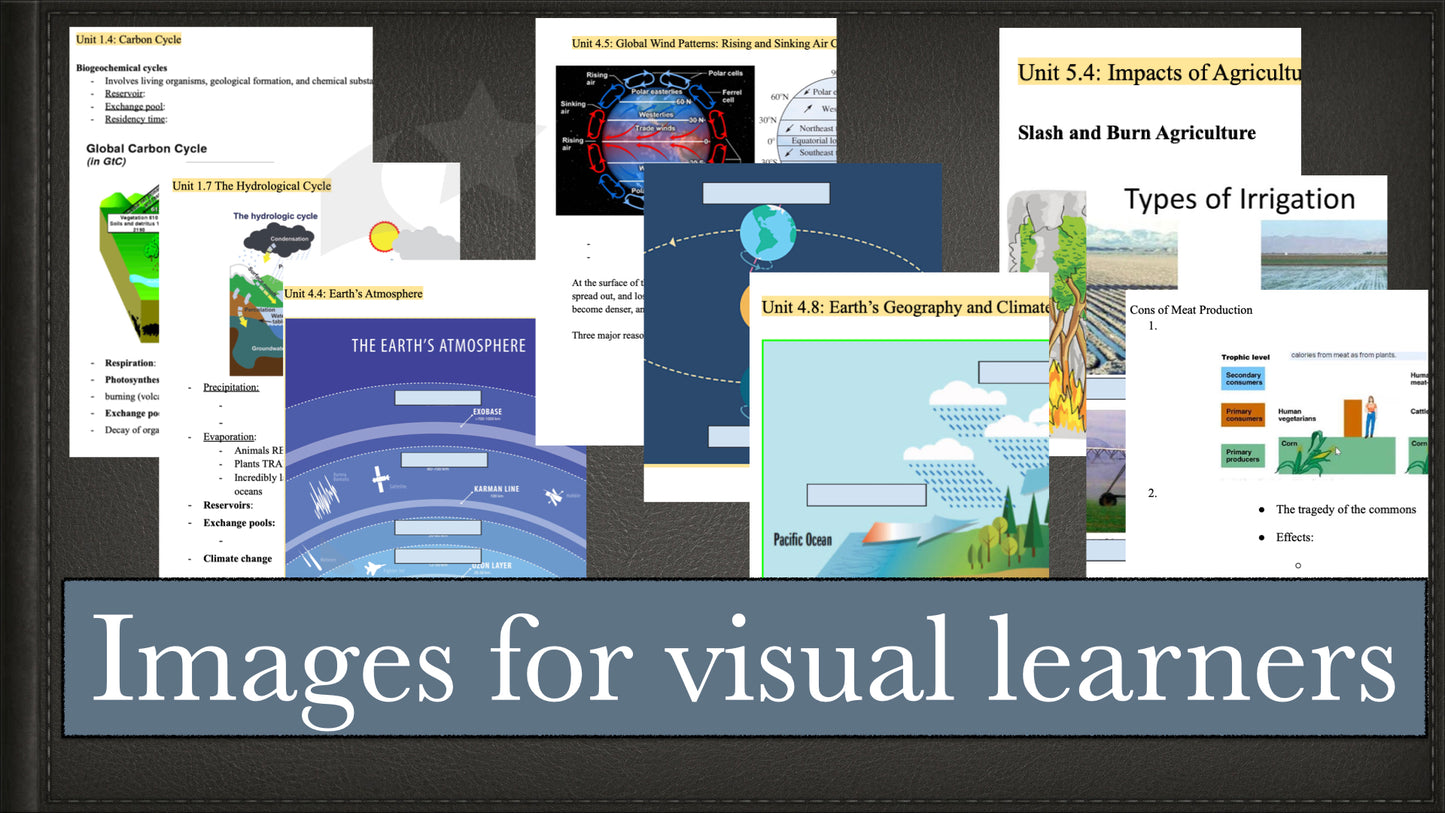1
/
of
5
My Store
AP Environmental Science FILL-IN notes, answer key, speed notes, & check list
AP Environmental Science FILL-IN notes, answer key, speed notes, & check list
Regular price
$7.00 USD
Regular price
Sale price
$7.00 USD
Quantity
Couldn't load pickup availability
I taught AP environmental science for almost a year in South Korea. These are the student WORKBOOK notes that review major concepts that are on the AP exam. FURTHERMORE, I have included an answer key, CRAM notes PLUS a check list of major topics.
Topic breakdown:
Unit 1: The living World —Ecosystems
Introduction to ecosystems, terrestrial biomes, aquatic biomes, carbon cycle, Nitrogen Cycle, Phosphorous Cycle, Hydrological Cycle, Primary Productivity, Trophic levels/energy flow, food chains
Unit 2: The living world—Biodiversity
Introduction to biodiversity, ecosystem services, island biogeography, ecological tolerance, natural disruptions to ecosystems, adaptations, ecological succession, loss of biodiversity
Unit 3: populations—
Generalist and specialists, K-selected/r-selected species, survivorship curves, carrying capacity, population growth/resource availability, age structure diagrams, total fertility rate, human population dynamics, demographic transitions,
Unit 4: Earth systems and resources—
Tectonic plates, soil formation/erosion, soil composition/properties, earth atmosphere, global wind patterns, watersheds, solar radiation/earth seasons, earth geography/climate, El Niño/La Niña
Unit 5: Land and Water use—
The tragedy of the commons, clear cutting, the green revolution, the impact of agriculture practices, irrigation methods, pest control methods, meat production methods, impacts of overfishing, impacts of mining, impacts of urbanization, ecological footprints, introduction to sustainability, methods to reduce urban runoff, integrated pest management, sustainable agriculture, aquaculture, suitable forestry
Unit 6: Energy resources and Consumption—
Renewable and nonrenewable resources, global energy consumption, fuel types and uses, distribution of natural energy resources, fossil fuels, renewable energy, energy conservation, env policy
Unit 7: Atmospheric pollution—
Introduction to air pollution, photochemical smog, thermal inversion, atmospheric CO2/particulates, indoor air pollution, reduction of air pollutants, acid rain, noise pollution
Unit 8: Aquatic and Terrestrial Pollution—
Sources of pollution, human impact on ecosystems, endocrine disruptors, human impacts on wetland/mangroves, eutrophication, thermal pollution, persistent organic pollutants, bioaccumulation and biomagnification, solid waste disposal, waste reduction methods, sewage treatment, lethal dose 50%, Dose response curve, pollution and human health, pathogens and infectious diseases
Unit 9: Global Change—
Stratospheric ozone depletion, reducing ozone depletion, the greenhouse effect, increases in the greenhouse gases, global climate change, ocean warming, ocean acidification, invasive species, endangered species, human impact on biodiversity
Share










